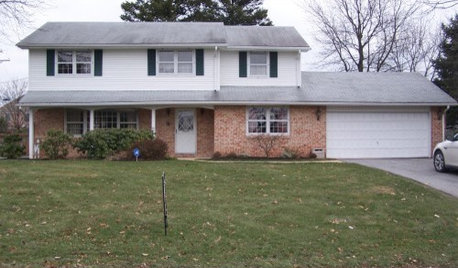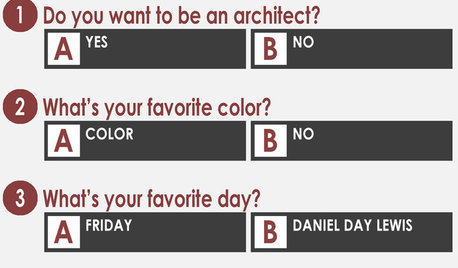two questions on swarming
thisbud4u
17 years ago
Related Stories


KITCHEN DESIGN9 Questions to Ask When Planning a Kitchen Pantry
Avoid blunders and get the storage space and layout you need by asking these questions before you begin
Full Story
WORKING WITH PROS12 Questions Your Interior Designer Should Ask You
The best decorators aren’t dictators — and they’re not mind readers either. To understand your tastes, they need this essential info
Full Story
ORGANIZINGPre-Storage Checklist: 10 Questions to Ask Yourself Before You Store
Wait, stop. Do you really need to keep that item you’re about to put into storage?
Full Story
COFFEE WITH AN ARCHITECTA Quiz for Architects in Question
Should you trade in your T-square for a barista tray? Answer a few simple questions to find out
Full Story
REMODELING GUIDES13 Essential Questions to Ask Yourself Before Tackling a Renovation
No one knows you better than yourself, so to get the remodel you truly want, consider these questions first
Full Story
MOST POPULAR8 Questions to Ask Yourself Before Meeting With Your Designer
Thinking in advance about how you use your space will get your first design consultation off to its best start
Full Story
DOORS5 Questions to Ask Before Installing a Barn Door
Find out whether that barn door you love is the right solution for your space
Full Story
FEEL-GOOD HOMEThe Question That Can Make You Love Your Home More
Change your relationship with your house for the better by focusing on the answer to something designers often ask
Full Story
GREEN BUILDINGConsidering Concrete Floors? 3 Green-Minded Questions to Ask
Learn what’s in your concrete and about sustainability to make a healthy choice for your home and the earth
Full StorySponsored






txbeeguy
thisbud4uOriginal Author
Related Professionals
Birmingham Landscape Architects & Landscape Designers · Kapaa Landscape Architects & Landscape Designers · Middle Island Landscape Architects & Landscape Designers · Milwaukee Landscape Architects & Landscape Designers · Wheeling Landscape Architects & Landscape Designers · Waterbury Landscape Contractors · Franklin Landscape Contractors · Fruit Heights Landscape Contractors · Huntington Landscape Contractors · Manhattan Landscape Contractors · Matteson Landscape Contractors · Royal Oak Landscape Contractors · The Woodlands Landscape Contractors · Washington Landscape Contractors · West Orange Landscape Contractorsfromoverthepond
Konrad___far_north
fromoverthepond